
| home | catalogue | history | references | appendix |
 |
surfresearch.com.au
references
: books w
|
| a |
|
|
|
|
|
|
|
|
|
|
|
|
|
|
|
|
|
|
|
|
|
|
|
|
|
| 2007
Wade, Alex: Surfing Nation In Search of the fast Lefts and Hollow Rights of Britain and Ireland. Simom and Shuster, UK ltd Africa House, 64-78 Kingsway, London WC2B 6AH, 2007. Pocket Books, 2008. Soft cover, 340 pages, black and white photographs, Acknowledgements, Glossary. Review Professionally written overview of the surfers and surfing locations of England, Wales, Scotland and Ireland circa 2006. With some historical background (occassionally less than accurate, note the James Cook references) and literary and cinematic insights, Wade generally emphasises the rugged nature and quality of both the surfers and locations, which tends be be slightly repitious by the book's conclusion. Although not intended as a surf guide, a lack of maps makes the author's extensive travels somewhat confusing for the international reader. Chapter 12, on famous tidal bore on the Severn River, is a interesting contrast with storm generated ocean waves. |
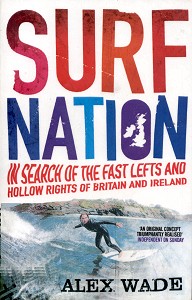 |
| 2006
Walding, Murray : Blue Heaven : The Story of Australian Surfing Hardie Grant Books 12 Claremont Street South Yarra, Victoria 3141, Australia, 2006. Paperback, 194 pages, extensive colour, duotone and b/white photographs, Bibliography, Index. Review |
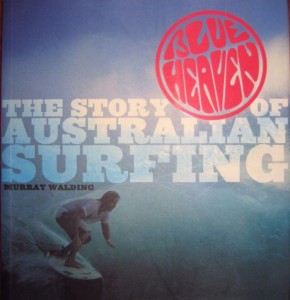 |
| Warner, P.F. (editor): The Boy's Own Book of of Outdoor Games and Pastimes. The Religious Tract Society, 4 Bouverie Street and 65 St. Pauls Churchyard E.C., 1913. For extract , see H.S Abbott : Surfing in Australia, pages 178 to 180. |
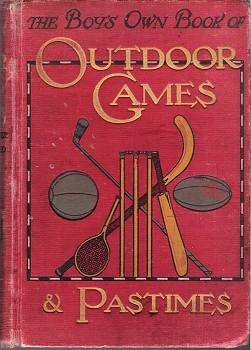 |
| 1988 Warren, Mark: Atlas of Australian Surfing Angus and Robertson Publishers Unit 4 Eden Park 31 Waterloo Road North Ryde NSW Australia 1988 Hard cover, 232 pages, 68 colour photographs?, 46 black and white maps?, Glossary, Index. Review Comprehensive guide to Australian surf breaks, in similar format to Jeff Carter (East Coast, 1968), Nat Young (East Coast, 1980/1983 and Surf/Sail Australia, 1986), Chris Rennie (Australia, 1998) and Richard Loveridge (Victoria, 1987). Break information (swell, tide, wind) is supplemented with occassional historical, cultural or personal observations. Blue boards with dust jacket. |
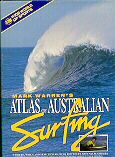 |
| 1994 Warren, Mark: Atlas of Australian Surfing (Second Edition) Angus and Robertson Publishers Unit 4 Eden Park 31 Waterloo Road North Ryde NSW Australia. 1994 Hard cover, 232 pages, 68 colour photographs?, 46 black and white maps?, Glossary, Index. Review Comprehensive guide to Australian surf breaks, in similar format to Jeff Carter (East Coast, 1968), Nat Young (East Coast, 1980/1983 and Surf/Sail Australia, 1986), Chris Rennie (Australia, 1998) and Richard Loveridge (Victoria, 1987). Break information (swell, tide, wind) is supplemented with occassional historical, cultural or personal observations. Basically same text/illustrations with some minor variation in format (pages 2 -3?), different cover in laminated boards. |
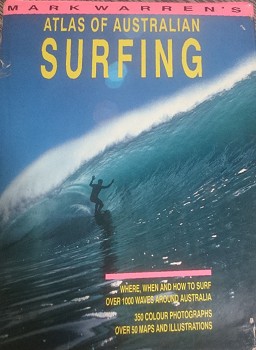 |
| 1998 Warren, Mark: Atlas of Australian Surfing- Revised Edition Angus and Robertson Publishers Unit 4 Eden Park 31 Waterloo Road North Ryde NSW Australia. 1998 Hard cover, 232 pages, 68 colour photographs?, 46 black and white maps?, Glossary, Index. Review |
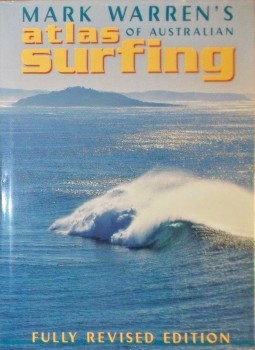 |
| 1999 Warren, Mark: Atlas of Australian Surfing - Traveller's Edition Haper Collins Publishers 25 Ryde Road Pymble Sydney NSW 2073 Australia. 1999 Reprint of 1989 edition Laminated soft cover, 272 pages, 68 colour photographs, 46 black and white maps + continent map on end papers, Glossary, Index. Review Comprehensive guide to Australian surf breaks, in similar format to Jeff Carter (East Coast, 1968), Nat Young (East Coast, 1980/1983 and Surf/Sail Australia, 1986), Chris Rennie (Australia, 1998) and Richard Loveridge (Victoria, 1987). Break information (swell, tide, wind) is supplemented with occassional historical, cultural or personal observations. Despite being a 1999 edition, some details are incorrect -e.g. The Farm (page 126) is incorrectly shown on the map, appears to be confused with Mystics (page 127) and neither is private property, the area being declared as Killalea State Recreational Area in the early 1990's. This copy, courtesy of Shoalhaven City Library. |
 |
| 2004 Warshaw, Matt : The Encyclopedia of Surfing Viking Penguin Books Australia Pty Ltd 250 Camberwell Road Camberwell, Victoria 3124, Australia Hard cover, 774 pages, black and white photographs. Appendicies include Bibliography, Contest Results, Movies, Magazines, Music. Review Encyclopedic. Personal note : Internet and surfing, page 293, notes... sites for surf history (legendarysurfers.com, surfresearch.com.au) |
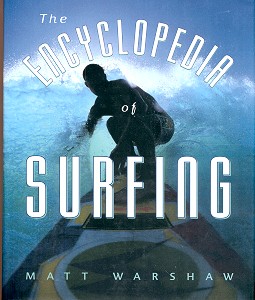 |
| 2017 Warshaw, Matt : A Brief History of Surfing Chronicle Books LLC. 680 Second Street, San Francisco, California 94107, 2017. www.chroniclebooks.com Hard cover, 272 pages, colour and black and white photographs and illustrations, Acknowledgements, Sources, Photograph Credits, Index. Review A rigorously edited version of the above publication in a smaller format. |
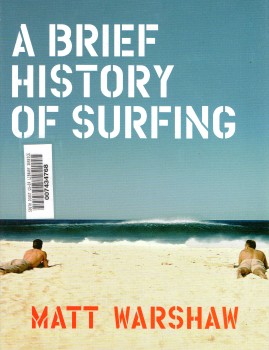 |
| 1996 Werner, Doug : Longboarder's Start-Up : A Guide to Longboard Surfing Start Up Sports/Tracks Publishing 140 Brightwood Avenue, Chula Vista, California, CA 91910. 1996 Soft cover, 160 pages, black and white photographs, black and white photograph sequences, black and white illustrations, Glossary, Resources, Bibliography, Index. Review Longboard edition of Werner's Surfer's Start-Up : A Beginner's Guide to Surfing, 1993. See second edition, 1999, below. Intensive instructional book concentrating on basic and advanced manouvers. Design features are discussed in an interview with Bill Stewart and Henry Ford of Stewart Surfboards, pages 119 to 136. Classic
longboarders may find Bob McTavish's Malibu
Repetoire circa 1966 of interest, see Source Documents:
This copy, courtesy of Shoalhaven City Library. |
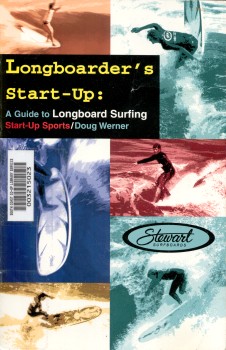 |
| 1915 Westervelt, W.D Legends of Old Honolulu - Collected and translated from the Hawaiian Geo. H. Ellis, Boston, and Constable & Co, London (1915) Hard cover, 284 pages, Index. Review Bound in Tapa cloth, sepia photo illustrations and map of Oahu and Tapa cloth sample. Legends include one on surfing. The author collected these legends from old Hawaiians and from files of papers published from 1850-1870. Reprinted: Charles E. Tuttle Co., Rutland, VT & Tokyo, Japan (1963), 13th printing 1979. |
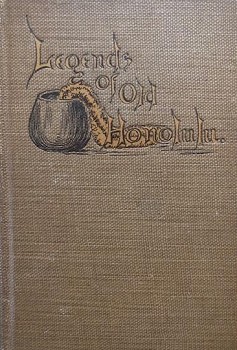 |
| 2013 Westwick, Peter and Neushul, Peter: The World in the Curl: An Unconventional History of Surfing Crown Publishers, New York, 2013. Hard cover, 416 pages, Acknowledgements, Notes, Bibliography, Index. Review A highly readable history of surfing and the cultural, political, economic, and environmental consequences of its evolution to a billion-dollar worldwide industry. The work is, regrettably less than definitive; the omission of Simon Anderson and his three fin Thruster of 1981 is inexplicable. |
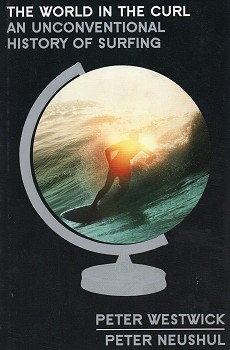 |
| 1978 Whitman, John B.: An Account of the Sandwich Islands: The Hawaiian Journal of John B. Whitman, 1813-1815. Topgallant Publishing Company, Honolulu, Hawaii, 1979. and Peabody Museum of Salem, Salem, Massachusetts,1979. Hard cover, xx pages. Review For extracts see: 1813 John B. Whitman : Hawaiian Journal. |
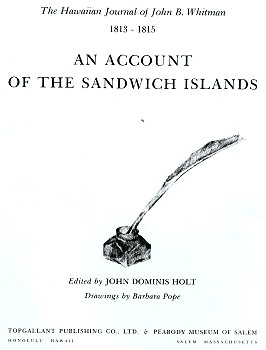 |
| 1910 Wilcox, Ella Wheeler, illustrations by John Prendergast: The New Hawaiian Girl; a play. London, Gay & Hancock, 1910 Hard cover, 16 pages, colour illustrations, 22 cm. Review A short play in verse set in Hawai'i. Mrs. Ella W. Wilcox was noted as one of the earliest supporters of the Outrigger Club( Evening Bulletin, 14th March 1908) Illustration 2, John
Prendergast: [Surfboard Riders], 1910.
|
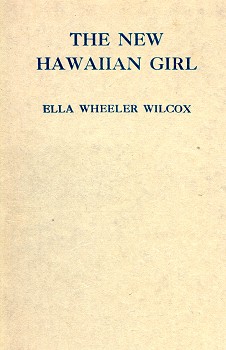 |
| 2000 Williamson, Luke: Gone Surfing - The Golden Years of Surfing in New Zealand, 1950 -1970 Penguin Books (NZ) Ltd, cnr Airborne and Rosedale Roads, Albany, Auckland 1310, New Zealand, 2000 Soft cover, pages, colour photographs, black and white photographs, various magazine, poster and advertising reproductions, Glossary, Thank You (Credits). Review Excellent early history of New Zealand boardriding with a healthy concentration on board design and manufacture. Unfortunately makes no account of prone craft and some interesting New Zealand designs such as the Levine (a hollow timber board available in kit form, circa 1959) and the Tinkler tail (1976, outside the historical parameters) are absent. |
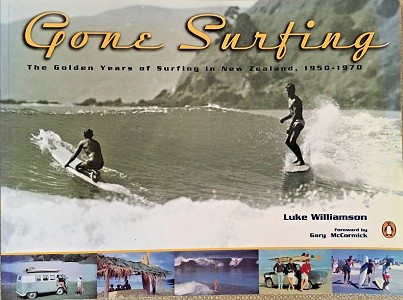 |
| 2003 Willis, Clint (editor): Big Wave- Stories of Riding the World's Widest Water Adrenaline Thunder Mouth Press An imprint of Avalon Publishing Group Incorporated 161 William Street, 16th floor New York, NY 10038 Soft cover, 316 pages, Acknowledgements, Permissions, Bibliography. Review A collection of surf stories or surfer profiles from a selection of professional American writers. Half are selections from widely available books that are included in the surfresearch.com.au bibliography, for example Daniel Duane, Greg Noll, Jack London, John Grissim and Matt Warshaw. The remainder are reprints of magazine articles such as Outside and The Surfer's Journal. |
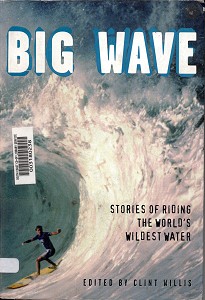 |
| 1979 Wilson, Jack Australian Surfing and Life Saving Rigby Limited, Melbourne, Sydney, Australia .,1979 Hard cover, pages, 29 colour photographs (plates), 75 black and white photographs, 7 black and white illustrations. Surfing photographs by Bruce Channon/Surfing World Review |
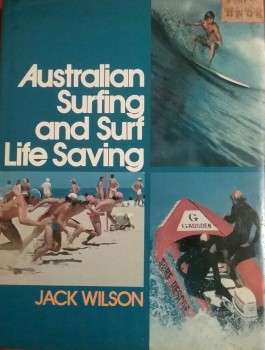 |
| 1970 Wilson, Doug: Learn to Surf European Surfing Co Ltd, Newquay, Cornwall, 1970. Soft cover, 32 pages, illustrated with colour and b/w photographs, diagrams, glossary of surfing terms. Review Written by a pioneer of Britain's surf industry who states, in the Foreword: This book has been prepared as an introduction to surfing. It is not intended as a full and comprehensive account of all aspects of surfing. The contents cover Body surfing; Belly boarding; Malibu board riding, surfers in action pp 13-19 with colour photographs. Wake surfing; Skateboarding; Skim boarding; Beaches and the surf; Rips and undertows and Safety in the surf. |
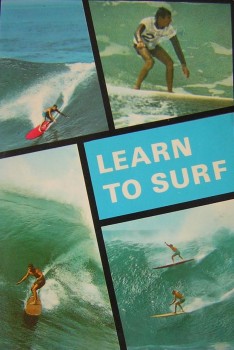 |
| 1980 Winter, Peter : 70 Years On Greenmount The Review |
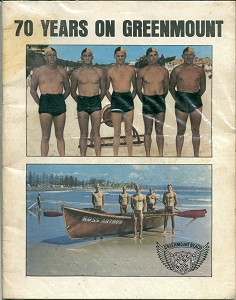 |
| 2011 Witzig, John: These are (mostly) pictures you've never seen. John Witzig, Maclean, N.S.W., 2011. Soft cover, unpaged, black and white and colour photographs, Review A large format soft cover book with a number of the images, despite the title, appearing in the earlier Surfing Photographs From the 1960s and '70s, above. |
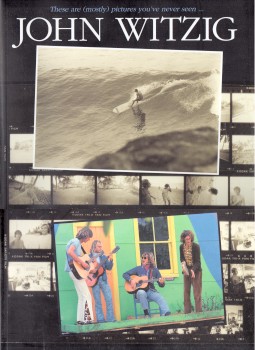 |
| 1881 Wright, Saul (Frank ) Surf- A Summer Prilgrimage Hardcover, 96 pa Review No surfing content, however one character recalls surf-bathing and a his rescue of a female swimmer at ??? |
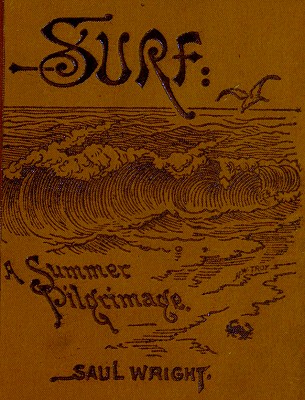 |
| a |
|
|
|
|
|
|
|
|
|
|
|
|
|
|
|
|
|
|
|
|
|
|
|
|
|

| home | catalogue | history | references | appendix |